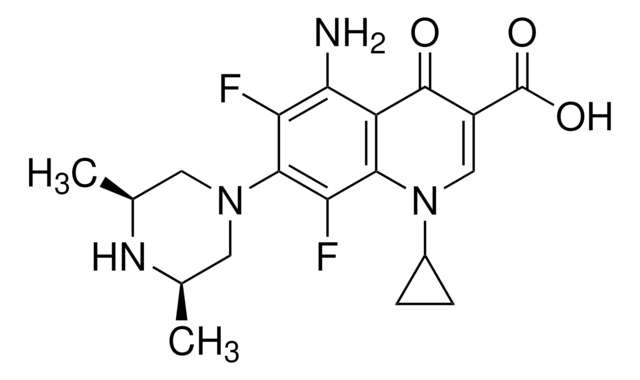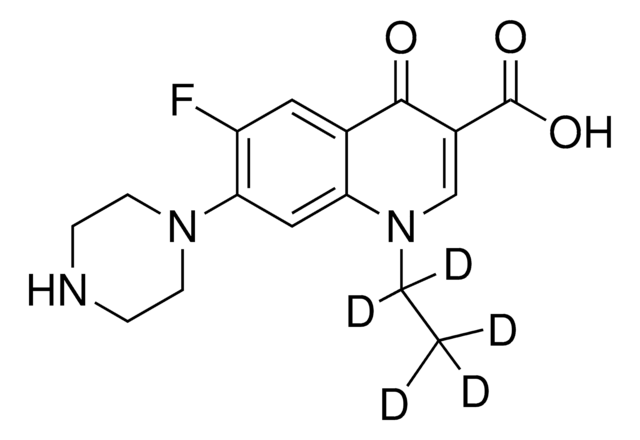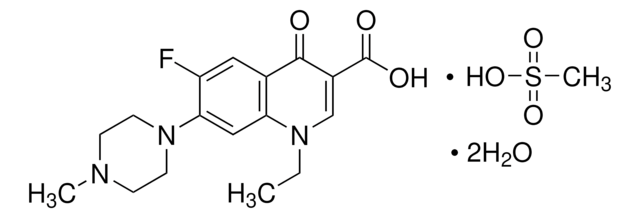N9890
Norfloxacin
analytical standard, ≥98% (TLC)
Sinônimo(s):
1-Ethyl-6-fluoro-1,4-dihydro-4-oxo-7-(1-piperazinyl)-3-quinolinecarboxylic acid, 1-Ethyl-6-fluoro-1,4-dihydro-4-oxo-7-piperazino-3-quinolinecarboxylic acid
About This Item
Produtos recomendados
grau
analytical standard
Nível de qualidade
Agency
EPA 1694
Ensaio
≥98% (TLC)
técnica(s)
HPLC: suitable
gas chromatography (GC): suitable
aplicação(ões)
clinical testing
formato
neat
temperatura de armazenamento
2-8°C
cadeia de caracteres SMILES
CCN1C=C(C(O)=O)C(=O)c2cc(F)c(cc12)N3CCNCC3
InChI
1S/C16H18FN3O3/c1-2-19-9-11(16(22)23)15(21)10-7-12(17)14(8-13(10)19)20-5-3-18-4-6-20/h7-9,18H,2-6H2,1H3,(H,22,23)
chave InChI
OGJPXUAPXNRGGI-UHFFFAOYSA-N
Informações sobre genes
human ... CYP1A2(1544)
rat ... Gabra1(29705)
Procurando produtos similares? Visita Guia de comparação de produtos
Categorias relacionadas
Descrição geral
Aplicação
Ações bioquímicas/fisiológicas
Mode of action: inhibits bacterial DNA replication
Antimicrobial spectrum: Gram-negative bacteria; less effective against Gram-positive bacteria
Código de classe de armazenamento
11 - Combustible Solids
Classe de risco de água (WGK)
WGK 2
Ponto de fulgor (°F)
Not applicable
Ponto de fulgor (°C)
Not applicable
Equipamento de proteção individual
Eyeshields, Gloves, type N95 (US)
Choose from one of the most recent versions:
Certificados de análise (COA)
Don't see the Right Version?
If you require a particular version, you can look up a specific certificate by the Lot or Batch number.
Já possui este produto?
Encontre a documentação dos produtos que você adquiriu recentemente na biblioteca de documentos.
Os clientes também visualizaram
Artigos
Quinolones are a key group of antibiotics that interfere with DNA synthesis by inhibiting topoisomerase, most frequently topoisomerase II (DNA gyrase), an enzyme involved in DNA replication.
Nossa equipe de cientistas tem experiência em todas as áreas de pesquisa, incluindo Life Sciences, ciência de materiais, síntese química, cromatografia, química analítica e muitas outras.
Entre em contato com a assistência técnica











